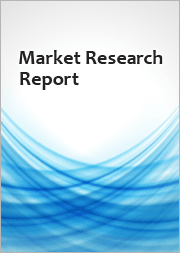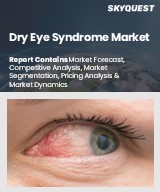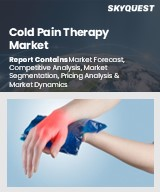
|
시장보고서
상품코드
1627724
세계의 처방약 시장 : 예측(2025-2030년)Global Prescription Drugs Market - Forecasts from 2025 to 2030 |
||||||
세계 처방약 시장 규모는 연평균 4.67% 성장하여 2025년 1조 2,680억 800만 달러에서 2030년 말에는 1조 5,930억 1,900만 달러에 달할 것으로 추정됩니다.
처방약은 일반의약품(OTC)에 비해 강력합니다. 따라서 부적절하게 사용하면 심각한 부작용을 일으킬 수 있습니다. 이러한 의약품은 의사의 처방에 따라 고객에게 전달됩니다. 의사의 처방전 메모지나 대부분의 약국 간판에 있는 Rx라는 기호가 의료용 처방전 기호라는 것을 알고 있는 분들도 있을 것입니다. 전 세계 의약품 지출 증가는 예측 기간 동안 시장 성장에 큰 영향을 미칠 것으로 보입니다.
주요 촉진요인 중 하나는 특수 의약품의 높은 비용과 치료용 의약품의 사용 확대입니다. 희귀 질환의 확산은 예측 기간 동안 시장을 더욱 촉진할 것입니다. 전 세계적으로 만성질환의 증가는 예측 기간 동안 처방약 판매를 더욱 촉진하고 있습니다. 또한, 전 세계 암 발병률의 증가는 예측 기간 동안 시장 확대를 촉진하고 있습니다.
또한, 전 세계 노인 인구의 증가는 예측 기간 동안 시장 성장 전망을 크게 끌어올렸습니다. 선진 지역, 특히 북미는 처방약 시장에서 큰 비중을 차지할 것으로 예상됩니다. 반면, 아시아태평양은 치료가 필요한 인구가 많기 때문에 가장 빠르게 성장하는 지역 중 하나로 간주됩니다. 또한, 더 나은 의료 시설을 갖춘 의료 인프라를 개선하기 위한 막대한 투자로 인해 예측 기간 동안 시장이 성장할 수 있는 기회가 더욱 확대될 것으로 예상됩니다.
유형별로는 제네릭 의약품, 희귀질환 치료제, 기타 처방약으로 분류됩니다. 용도별로 세계 처방약 시장은 당뇨병, 종양, 심혈관계 질환, 자가면역질환, 기타로 분류됩니다. 유통 채널별로는 병원 내 약국, 드럭스토어 및 소매 약국, 온라인 약국으로 구분됩니다.
처방약 시장 활성화 요인
- 전 세계 만성질환 증가
전 세계적으로 만성질환 유병률이 크게 증가하고 있는 것이 널리 관찰되고 있습니다. 그 주요 요인으로는 도시화의 진전과 건강에 해로운 생활환경의 정착을 꼽을 수 있습니다. 또한, 전 세계 노인 인구의 증가는 노화 관련 질환의 증가에 기여하고 있으며, 이는 만성질환의 증가를 더욱 증가시켜 예측 기간 동안 시장 성장에 박차를 가할 것으로 보입니다. 알츠하이머병, 심혈관질환, 비만, 당뇨병과 같은 질병은 만성질환의 일부입니다. 예를 들어, Alzheimer's Disease International(ADI)에 따르면 2020년 현재 전 세계 치매 환자는 5,500만 명을 넘어섰습니다. 이 숫자는 20년 후 거의 두 배로 증가하여 2030년에는 7,800만 명, 2050년에는 1억 3,900만 명에 달할 것으로 예상됩니다. 이 중 상당수는 개발도상국에서 증가할 것입니다.
또한, 암 발병률의 증가는 예측 기간 동안 시장 성장에 더욱 박차를 가하고 있습니다. 예를 들어, 국립 의학 도서관에 따르면 2022년 인도의 암 발병률은 146만 1,427명으로 추정됩니다. 인구 100만 명당 100.4명으로 집계됐습니다. 인도에서는 9명 중 1명이 일생 동안 암에 걸릴 확률이 높습니다. 남녀 모두 폐암과 유방암이 가장 많습니다. 림프성 백혈병(남아: 29.2%, 여아: 24.2%)은 인도 소아(0-14세) 암 중 가장 흔한 부위입니다. 암 발병률은 2020년 대비 2025년에 12.8% 증가할 것으로 추정됩니다.
심혈관질환의 유병률 증가는 처방약 판매에 더욱 기여하여 예측 기간 동안 시장 성장을 촉진하고 있으며, CDC에 따르면 심장과 혈관 장애로 구성된 심혈관질환은 전 세계적으로 사망과 장애의 원인 중 1 위를 차지하고 있습니다. 이 질환의 주요 위험 요인으로는 고혈압과 고혈압이 있으며, 전 세계적으로 매년 1,000만 명이 사망할 것으로 예상됩니다.
이 보고서를 구입해야 하는 이유
- 통찰력 있는 분석 : 고객 부문, 정부 정책 및 사회경제적 요인, 소비자 선호도, 산업 및 기타 하위 부문에 초점을 맞춘 주요 지역 및 신흥 지역을 포괄하는 상세한 시장 분석을 얻을 수 있습니다.
- 경쟁 환경 : 세계 주요 기업들이 채택한 전략적 전략을 이해하고, 올바른 전략으로 시장 침투 가능성을 이해할 수 있습니다.
- 시장 동향과 촉진요인 : 역동적인 요인과 매우 중요한 시장 동향, 그리고 이들이 향후 시장 발전을 어떻게 형성할 것인지에 대해 알아봅니다.
- 실행 가능한 제안 : 역동적인 환경 속에서 새로운 비즈니스 스트림과 수익을 발굴하기 위한 전략적 의사결정을 내릴 수 있도록 인사이트를 활용합니다.
- 다양한 사용자에 대응 : 스타트업, 연구기관, 컨설턴트, 중소기업, 대기업에 유익하고 비용 효율적입니다.
어떤 용도로 사용되는가?
산업 및 시장 인사이트, 사업 기회 평가, 제품 수요 예측, 시장 진입 전략, 지리적 확장, 설비 투자 결정, 규제 영향, 신제품 개발, 경쟁 정보
조사 범위
- 2022-2030년 실적 데이터 및 전망
- 성장 기회, 과제, 공급망 전망, 규제 프레임워크, 고객 행동 및 트렌드 분석
- 경쟁사 포지셔닝, 전략 및 시장 점유율 분석
- 부문 및 국가를 포함한 지역별 매출 성장 및 예측 분석
- 기업 개요(주로 전략, 제품, 재무 정보, 주요 개발 등)
목차
제1장 소개
- 시장 개요
- 시장 정의
- 조사 범위
- 시장 세분화
- 통화
- 가정
- 기준 연도와 예측 연도 타임라인
- 이해관계자에 대한 주요 이점
제2장 조사 방법
- 조사 설계
- 조사 과정
제3장 주요 요약
- 주요 조사 결과
- 애널리스트의 견해
제4장 시장 역학
- 시장 성장 촉진요인
- 시장 성장 억제요인
- Porter's Five Forces 분석
- 업계 밸류체인 분석
제5장 처방약 세계 시장 분석 : 유형별
- 소개
- 제네릭
- 희귀질환용 의약품
- 기타
제6장 처방약 세계 시장 분석 : 용도별
- 소개
- 당뇨병
- 종양
- 심혈관질환
- 자가면역질환
- 기타
제7장 처방약 세계 시장 분석 : 유통 채널별
- 소개
- 원내 약국
- 드럭스토어와 소매 약국
- 온라인 약국
제8장 처방약 세계 시장 분석 : 지역별
- 소개
- 북미
- 미국
- 캐나다
- 멕시코
- 남미
- 브라질
- 아르헨티나
- 기타
- 유럽
- 영국
- 독일
- 프랑스
- 기타
- 중동 및 아프리카
- 아랍에미리트
- 이스라엘
- 사우디아라비아
- 아시아태평양
- 일본
- 중국
- 인도
- 호주
- 기타
제9장 경쟁 환경과 분석
- 주요 기업과 전략 분석
- 시장 점유율 분석
- 합병·인수·협정·협업
- 경쟁 대시보드
제10장 기업 개요
- Novartis AG
- Pfizer Inc.
- Sanofi
- Johnson & Johnson Services, Inc.
- Merck & Co., Inc.
- AbbVie Inc.
- GlaxoSmithKline plc.
- AstraZeneca
- Bristol-Myers Squibb Company
- Amgen Inc.
- Teva Pharmaceutical Industries Ltd.
- Novo Nordisk A/S
- Bayer AG
- Gilead Sciences, Inc
- Eli Lilly and Company
- Allergan
- Takeda Pharmaceutical Company Limited
- Boehringer Ingelheim International GmbH
The global prescription drug market is estimated to augment at a CAGR of 4.67%, increasing from US$1,268.008 billion in 2025 to US$1,593.019 billion by the end of 2030.
Prescription drugs are more potent in comparison to over-the-counter (OTC) drugs. Hence, their inappropriate use may lead to serious side effects. These medicines are handed over to customers based on doctors' prescriptions. One might have noticed on the doctor's prescription notepads and signs in most pharmacies that the symbol Rx is the symbol for medical prescription. Growing global pharmaceutical spending will have a significant impact on fueling the market growth during the forecast period.
One of the main drivers is the high cost of specialty medicines and the growing use of medical treatments. The prevalence of rare disorders further propels the market during the forecast period. The increasing number of chronic diseases worldwide is further raising the sales of prescription drugs in the forecast period. The growing number of cancer incidences worldwide is also driving the market expansion during the forecast period.
Furthermore, the growing number of elderly individuals worldwide has significantly raised market growth prospects in the forecast period. The developed regions of the world, particularly North America, is projected to hold a significant share in the prescription drug market. On the other hand, the Asia-Pacific region is regarded as one of the fastest-growing, owing to the prevalence of a large population requiring treatment. In addition, significant investments in improving healthcare infrastructure with better health facilities are further providing an opportunity for the market to grow during the forecast period.
Based on type, the market is categorized as generics, orphan drugs, and other prescription drugs. By application, the global prescription drug market is segregated into diabetes, oncology, cardiovascular diseases, autoimmune diseases, and others. The market is segmented by distribution channel into hospital pharmacies, drug stores, retail pharmacies, and online pharmacies.
Global Prescription Drugs Market Drivers
- Rising incidences of chronic diseases worldwide
It has been observed on a wide scale that there is a significant rise in the global chronic disease burden. One of the major reasons includes growing urbanization and the adoption of unhealthy living conditions. Additionally, the growing geriatric population worldwide is contributing to the rise of age-associated diseases, further augmenting chronic disease growth and fueling the market growth in the forecast period. Diseases such as Alzheimer's disease, cardiovascular disease, obesity, and diabetes are some chronic diseases. For instance, according to Alzheimer's Disease International (ADI), there were over 55 million people worldwide who are living with dementia as of 2020. The number will almost double in 20 years, reaching 78 million in 2030 and 139 million in 2050. Much of the increase will be in developing countries.
The rising incidences of cancer are further providing an impetus, fueling the market growth in the forecast period. For instance, according to the National Library of Medicine, the estimated incidence of cancer cases in 2022 was 14,61,427 in India. With the crude rate, it was 100.4 cases per 1,00,000 population. In India, one in nine people develops cancer in their lifetime. In males and females, lung and breast cancers are most often found. Lymphoid leukemia (among boys: 29.2% and girls: 24.2%) was the most prevalent childhood (0-14 years) cancer site in India. The incidence of cancer cases is estimated to increase by 12.8 percent in 2025 compared to 2020.
The growing prevalence of cardiovascular diseases is further contributing to the sales of prescription drugs, fueling the market growth in the forecast period. As per the CDC, cardiovascular diseases, comprising disorders of the heart and blood vessels, are ranked as the number one cause of death and disability globally. The major risk factors for this disease include high blood pressure or hypertension, which are attributed to causing a predicted 10 million deaths globally every year.
Reasons for buying this report:-
- Insightful Analysis: Gain detailed market insights covering major as well as emerging geographical regions, focusing on customer segments, government policies and socio-economic factors, consumer preferences, industry verticals, other sub- segments.
- Competitive Landscape: Understand the strategic maneuvers employed by key players globally to understand possible market penetration with the correct strategy.
- Market Drivers & Future Trends: Explore the dynamic factors and pivotal market trends and how they will shape up future market developments.
- Actionable Recommendations: Utilize the insights to exercise strategic decision to uncover new business streams and revenues in a dynamic environment.
- Caters to a Wide Audience: Beneficial and cost-effective for startups, research institutions, consultants, SMEs, and large enterprises.
What do businesses use our reports for?
Industry and Market Insights, Opportunity Assessment, Product Demand Forecasting, Market Entry Strategy, Geographical Expansion, Capital Investment Decisions, Regulatory Framework & Implications, New Product Development, Competitive Intelligence
Report Coverage:
- Historical data & forecasts from 2022 to 2030
- Growth Opportunities, Challenges, Supply Chain Outlook, Regulatory Framework, Customer Behaviour, and Trend Analysis
- Competitive Positioning, Strategies, and Market Share Analysis
- Revenue Growth and Forecast Assessment of segments and regions including countries
- Company Profiling (Strategies, Products, Financial Information, and Key Developments among others)
The Global Prescription Drugs market is segmented and analyzed as follows:
By Type
- Generics
- Orphan Drugs
- Others
By Application
- Diabetics
- Oncology
- Cardiovascular Diseases
- Autoimmune Diseases
- Others
By Distribution Channel
- Hospital Pharmacy
- Drug Stores & Retail Pharmacy
- Online Pharmacy
By Geography
- North America
- USA
- Canada
- Mexico
- South America
- Brazil
- Argentina
- Others
- Europe
- UK
- Germany
- France
- Others
- Middle East and Africa
- UAE
- Israel
- Saudi Arabia
- Others
- Asia Pacific
- Japan
- China
- India
- Australia
- Others
TABLE OF CONTENTS
1. INTRODUCTION
- 1.1. Market Overview
- 1.2. Market Definition
- 1.3. Scope of the Study
- 1.4. Market Segmentation
- 1.5. Currency
- 1.6. Assumptions
- 1.7. Base and Forecast Years Timeline
- 1.8. Key Benefits for the Stakeholders
2. RESEARCH METHODOLOGY
- 2.1. Research Design
- 2.2. Research Process
3. EXECUTIVE SUMMARY
- 3.1. Key Findings
- 3.2. Analyst View
4. MARKET DYNAMICS
- 4.1. Market Drivers
- 4.2. Market Restraints
- 4.3. Porter's Five Forces Analysis
- 4.3.1. Bargaining Power of Supplier
- 4.3.2. Bargaining Power of Buyers
- 4.3.3. The Threat of New Entrants
- 4.3.4. Threat of Substitutes
- 4.3.5. Competitive Rivalry in the Industry
- 4.4. Industry Value Chain Analysis
5. GLOBAL PRESCRIPTION DRUGS MARKET ANALYSIS BY TYPE
- 5.1. Introduction
- 5.2. Generics
- 5.3. Orphan Drugs
- 5.4. Others
6. GLOBAL PRESCRIPTION DRUGS MARKET ANALYSIS BY APPLICATION
- 6.1. Introduction
- 6.2. Diabetes
- 6.3. Oncology
- 6.4. Cardiovascular Diseases
- 6.5. Autoimmune Diseases
- 6.6. Others
7. GLOBAL PRESCRIPTION DRUGS MARKET ANALYSIS BY DISTRIBUTION CHANNEL
- 7.1. Introduction
- 7.2. Hospital Pharmacy
- 7.3. Drug Stores & Retail Pharmacy
- 7.4. Online Pharmacy
8. GLOBAL PRESCRIPTION DRUGS MARKET ANALYSIS BY GEOGRAPHY
- 8.1. Introduction
- 8.2. North America
- 8.2.1. United States
- 8.2.2. Canada
- 8.2.3. Mexico
- 8.3. South America
- 8.3.1. Brazil
- 8.3.2. Argentina
- 8.3.3. Others
- 8.4. Europe
- 8.4.1. UK
- 8.4.2. Germany
- 8.4.3. France
- 8.4.4. Others
- 8.5. Middle East and Africa
- 8.5.1. United Arab Emirates
- 8.5.2. Israel
- 8.5.3. Saudi Arabia
- 8.5.4.4. Others
- 8.6. Asia Pacific
- 8.6.1. Japan
- 8.6.2. China
- 8.6.3. India
- 8.6.4. Australia
- 8.6.5. Others
9. COMPETITIVE ENVIRONMENT AND ANALYSIS
- 9.1. Major Players and Strategy Analysis
- 9.2. Market Share Analysis
- 9.3. Mergers, Acquisitions, Agreements, and Collaborations
- 9.4. Competitive Dashboard
10. COMPANY PROFILES
- 10.1. Novartis AG
- 10.2. Pfizer Inc.
- 10.3. Sanofi
- 10.4. Johnson & Johnson Services, Inc.
- 10.5. Merck & Co., Inc.
- 10.6. AbbVie Inc.
- 10.7. GlaxoSmithKline plc.
- 10.8. AstraZeneca
- 10.9. Bristol-Myers Squibb Company
- 10.10. Amgen Inc.
- 10.11. Teva Pharmaceutical Industries Ltd.
- 10.12. Novo Nordisk A/S
- 10.13. Bayer AG
- 10.14. Gilead Sciences, Inc
- 10.15. Eli Lilly and Company
- 10.16. Allergan
- 10.17. Takeda Pharmaceutical Company Limited
- 10.18. Boehringer Ingelheim International GmbH



















